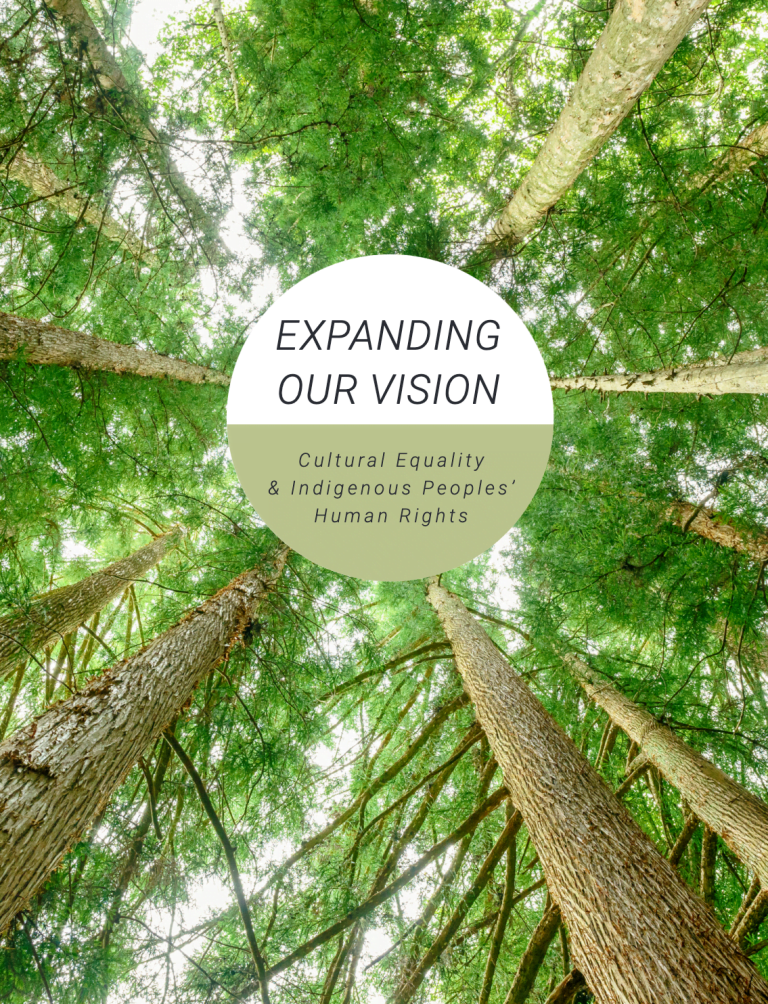12 search results
for
First Nations governments
Guiding recommendations
Recommendation 1: Broaden the concept of human rights to incorporate international human rights principles as reflected in the United Nations Declaration on the Rights of Indigenous Peoples (UNDRIP) and Indigenous legal traditions, in the Code and BCHRT operations and practice.-
Category and theme:
Groups affected:
Guiding recommendations
Recommendation 2: Advocate to add Indigenous identity as a protected ground to the Code. Current grounds of discrimination under the Code (including based on race, colour, ancestry or religion) do not adequately address the discrimination Indigenous Peoples report experiencing. This would send a message of inclusion and reflect the individual and collective nature of Indigenous human rights.-
Category and theme:
Groups affected:
Guiding recommendations
Recommendation 4: Create education materials and training:- For Indigenous Peoples, about the Code and BCHRT processes;
- Within the BCHRT, to develop cultural competency and safety among BCHRT staff and tribunal members;
- For the general public, through a proactive campaign to highlight specific areas of discrimination faced by Indigenous Peoples.
-
Category and theme:
Audience:
Groups affected:
Incorporate Indigenous laws
Recommendation 11: The BCHRT, working in concert with the Canadian Human Rights Tribunal, could approach other human rights agencies to institute an Indigenous ombuds office across jurisdictions, per the recommendation of the MMIWG2S Inquiry.-
Category and theme:
Audience:
Groups affected:
Public outreach to Indigenous communities
Recommendation 17: Create a public education campaign for Indigenous Peoples which addresses human rights from an Indigenous perspective:- Make materials easily accessible at Band offices, Métis organizations, Friendship Centres, Indigenous political organizations, and universities.
- Emphasize cases where Indigenous individuals have successfully brought human rights claims.
-
Category and theme:
Audience:
Groups affected:
Addressing systemic racism
Recommendation 24: Empower the ability for Indigenous organizations to file collectively, to advance claims on behalf of individuals, similar in context to a “human rights class action.”-
Category and theme:
Audience:
Groups affected:
Settlement
Recommendation 31: Include Indigenous dispute resolution models, mediators and peacemakers in BCHRT mediation or settlement discussions. Consider use of co-mediation or joint processes involving Indigenous Peoples.-
Category and theme:
Audience:
Groups affected:
Website
Recommendation 43: Develop a website using plain and easily accessible language to provide Indigenous Peoples with information and to guide them through stages of the application process. The website should feature case-based examples, specific to Indigenous Peoples; short videos to illustrate the BCHRT process; and a guide to help people through the BCHRT process.-
Category and theme:
Audience:
Groups affected:
Need for legal representation
Recommendation 44: Advocate, perhaps with the Office of the Human Rights Commissioner, Indigenous political organizations and legal advocacy organizations, for legal representation at the filing stage through to resolution, for Indigenous claimants.-
Category and theme:
Audience:
Groups affected:
Need for legal representation
Recommendation 45: Explore options to support greater access to justice for Indigenous Peoples in this area, including Indigenous human rights legal aid funding, administered by the Legal Services Society or a similar organization, to support Indigenous Peoples in making and advancing claims.-
Category and theme:
Audience:
Groups affected:
